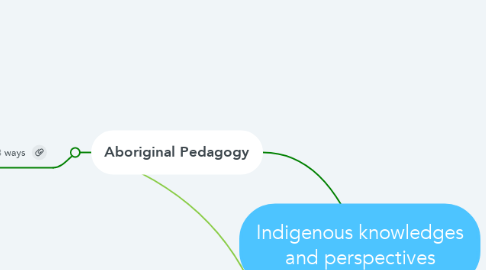
1. Aboriginal Pedagogy
1.1. 8 ways
1.1.1. Story Sharing: Approaching learning through narrative. Learning Maps: Explicitly mapping/visualising processes. Non-verbal: Applying intra-personal and kinaesthetic skills to thinking and learning. Symbols and Images: Using images and metaphors to understand concepts and content. Land Links: Place-based learning, linking content to local land and place. Non-linear: Producing innovations and understanding by thinking laterally or combining systems. Deconstruct/Reconstruct: Modelling and scaffolding, working from wholes to parts (watch then do). Community Links: Centring local viewpoints, applying learning for community benefit
2. Incorporating Indigenous Perspectives
2.1. Cross-curriculum Priority
2.1.1. Aboriginal and Torres Strait Islander students are able to see themselves, their identities and their cultures reflected in the curriculum of each of the learning area
2.1.2. all students to engage in reconciliation, respect and recognition of indigenous culture
2.2. Non-tokenistic
3. National Identity
3.1. Who is Us?
3.2. Race as a Social Construct
3.3. Stolen Generation
3.4. Closing the Gap
3.4.1. Non-deficit thinking
